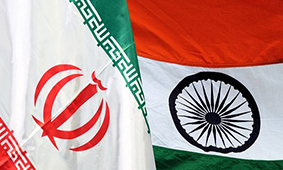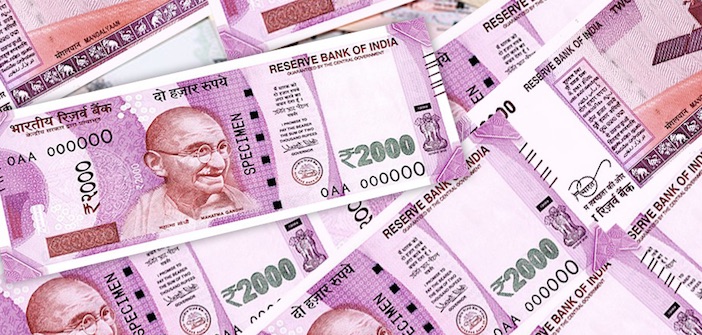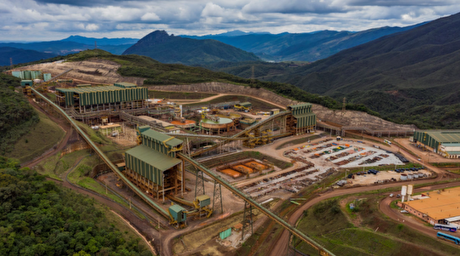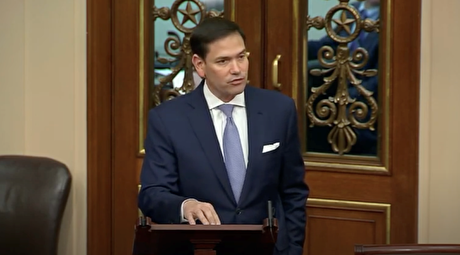
India Exempts Iran from Heavy Taxes in Oil Rupee Payments


The exemption, put in place December 28 but backdated to November 5, will allow Indian refiners to settle about $1.5 billion of outstanding payments to the NIOC; those have been building up since Tehran was put under stringent US sanctions in early November.
However, the income of a foreign company that is deposited in an Indian bank account is subject to a withholding tax of 40 percent plus other levies, leading to a total take by the authorities of 42.5 percent.
Iran will be able to use the rupee funds for a range of expenses - including imports from India, the cost of its missions in the country, direct investment in Indian projects, and its financing of Iranian students in India, according to another government document reviewed by Reuters. It can also invest the funds in Indian government debt securities.
That made the agreement unworkable for Iran and led to the freeze in payments by the refiners until the exemption could be introduced.
The tax exemption order, though, only refers to crude oil. That means it does not apply to imports of other commodities, such as fertilizer, liquefied petroleum gas and wax.
India, Iran’s top oil client after China, has turned to paying for Iranian oil in rupees as major banking channels dealing in global currencies are closed off by the US sanctions.
The tax exemption order, though, only refers to crude oil. That means it does not apply to imports of other commodities, such as fertilizer, liquefied petroleum gas and wax.
India, Iran’s top oil client after China, has turned to paying for Iranian oil in rupees as major banking channels dealing in global currencies are closed off by the U.S. sanctions.
Iran will be able to register as a foreign portfolio investor, allowing it to invest in Indian government debt.
In relevant remarks in late December, Iranian Oil Minister Bijan Zangeneh ruled out that the country's companies are facing problems in exporting crude due to the unilateral sanctions imposed by the US against Tehran.
"Private buyers of Iranian crude have been able to export it without any problems," Zangeneh said.
The Iranian oil minister pointed to the method of payment by Iran's foreign clients, and said, "Foreign buyers could choose whether to pay for the crude in Iranian rial or foreign currencies."
Iran launched the sale of oil supply futures on the eve of the new US sanctions targeting the country’s oil and banking sectors, and managed to sell 280,000 barrels of crude on the first day. In these transactions, the price per barrel was $74.85, 20 percent of which were paid in Iranian rial and the rest in foreign currencies.
In the second phase, the country sold 700,000 barrels of crude, with price per barrel at $64.97.
So far, the system of sales in the stock market was based on 20 percent paid with Iranian rial, and 80 percent in foreign currencies. Recent requests and proposals indicate that the sales will be paid 100 percent with Iranian rails from now on.


Codelco seeks restart at Chilean copper mine after collapse

Hudbay snags $600M investment for Arizona copper project

Uzbek gold miner said to eye $20 billion value in dual listing

BHP, Vale offer $1.4 billion settlement in UK lawsuit over Brazil dam disaster, FT reports

Peabody–Anglo $3.8B coal deal on the brink after mine fire

A global market based on gold bars shudders on tariff threat

SSR Mining soars on Q2 earnings beat

Minera Alamos buys Equinox’s Nevada assets for $115M

Century Aluminum to invest $50M in Mt. Holly smelter restart in South Carolina

Samarco gets court approval to exit bankruptcy proceedings

US eyes minerals cooperation in province home to Reko Diq

Allegiant Gold soars on 50% financing upsize

Explaining the iron ore grade shift

Metal markets hold steady as Trump-Putin meeting begins

Trump to offer Russia access to minerals for peace in Ukraine

Gemfields sells Fabergé luxury brand for $50 million

Gold price stays flat following July inflation data

Eco Oro seeks annulment of tribunal damage ruling

Zimbabwe labs overwhelmed as gold rally spurs exploration, miner says

Samarco gets court approval to exit bankruptcy proceedings

US eyes minerals cooperation in province home to Reko Diq

Allegiant Gold soars on 50% financing upsize

Explaining the iron ore grade shift

Metal markets hold steady as Trump-Putin meeting begins

Trump to offer Russia access to minerals for peace in Ukraine

Gemfields sells Fabergé luxury brand for $50 million

Gold price stays flat following July inflation data

Eco Oro seeks annulment of tribunal damage ruling














